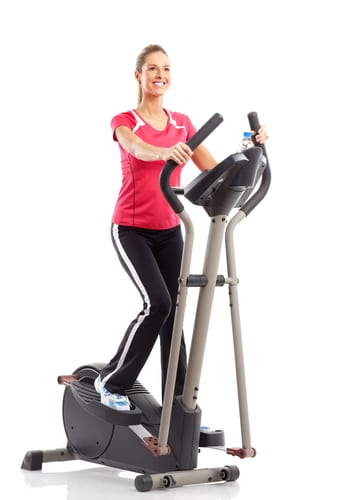
Do Exercise Machines Accurately Measured Calories Burned?
It’s nice to think you burned 800 calories on the treadmill, but that number may not be as accurate as you think. Some machines, particularly ellipticals, overestimate calories burned by as much as 20%. Unlike treadmills, lower end elliptical machines don’t allow you to program in height, weight, and gender, so these machines are predicting the number of calories burned based on what an average user burns.
If you’re below average height and weight, you may burn significantly less than what the elliptical readout says. Even the higher end models that require you to program in your height and weight won’t always give you an accurate readout. If you do the same workout on two different machines, you’ll likely get different results. The readings they give you are meant to be more of an estimate than an absolute value.
Treadmill Calorie Counts Aren’t Always Accurate Either
Treadmill calorie counts are usually more accurate than ellipticals since they’ve been around longer, and they’ve been tested and validated on a greater number of people. On the other hand, there are additional variables that can make the readings inaccurate on a treadmill. Treadmill readings don’t take into account whether you’re walking or running.
At higher speeds walking becomes less efficient than running, so if you’re briskly walking at treadmill speeds of 4.5 to 5.0 mph, you’re burning more calories than someone who’s running at the same treadmill speed. The treadmill is measuring calories as if you’re running it. People break into a run at different speeds, and this can affect the number of calories burned.
If you hold on to the treadmill handles, you’ll also get an inflated calorie burn since you’re reducing the amount of work you’re doing.
Other Factors That Affect Calories Burned on an Exercise Machine
Factors such as your level of fitness and how much lean body mass you have on your frame influence how many calories you’ll burn on a treadmill or elliptical machine. If you’ve been working out for a while and achieved a certain level of fitness, you’ll burn fewer calories than someone who’s just starting out. Your body becomes more efficient the longer you do a workout, and you burn fewer calories. So, the calorie count the machine spits back at you may be overinflated if you’ve worked out for a while.
Exercise machines also don’t take into account the ratio of lean body mass to fat. People who have more musculature will burn a greater number of calories for the same amount of effort. At least at this point, there isn’t an exercise machine that allows you to program in your body fat.
The Bottom Line?
Don’t depend on exercise machine calorie readouts to be completely accurate. The readouts are more likely to be accurate if they require you to program essential information such as weight, height, and gender. The best way to benefit from the calorie reading is to use it to follow your progress. If you burned more calories this workout than you did the last, you’re making progress. Just don’t use it as an excuse to eat a cream-filled chocolate doughnut.
References:
ACE Fitness. “Are the Calorie Counts on Exercise Machines Accurate?”
Men’s Health. “How Accurate Are Calorie Counters?”
Related Articles By Cathe:
Do Exercise Machines Really Measure Calories Burned Accurately?

